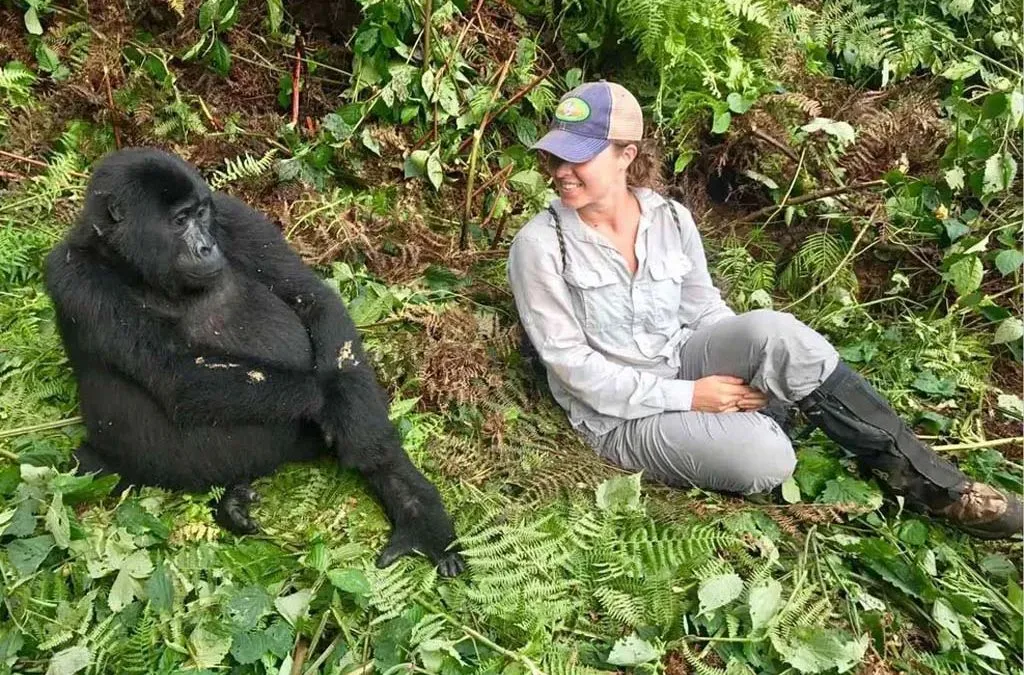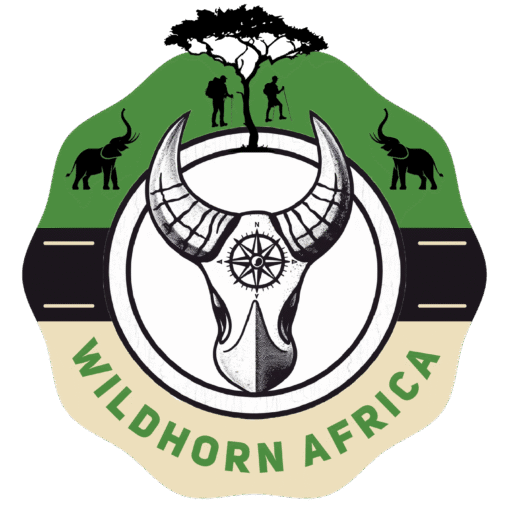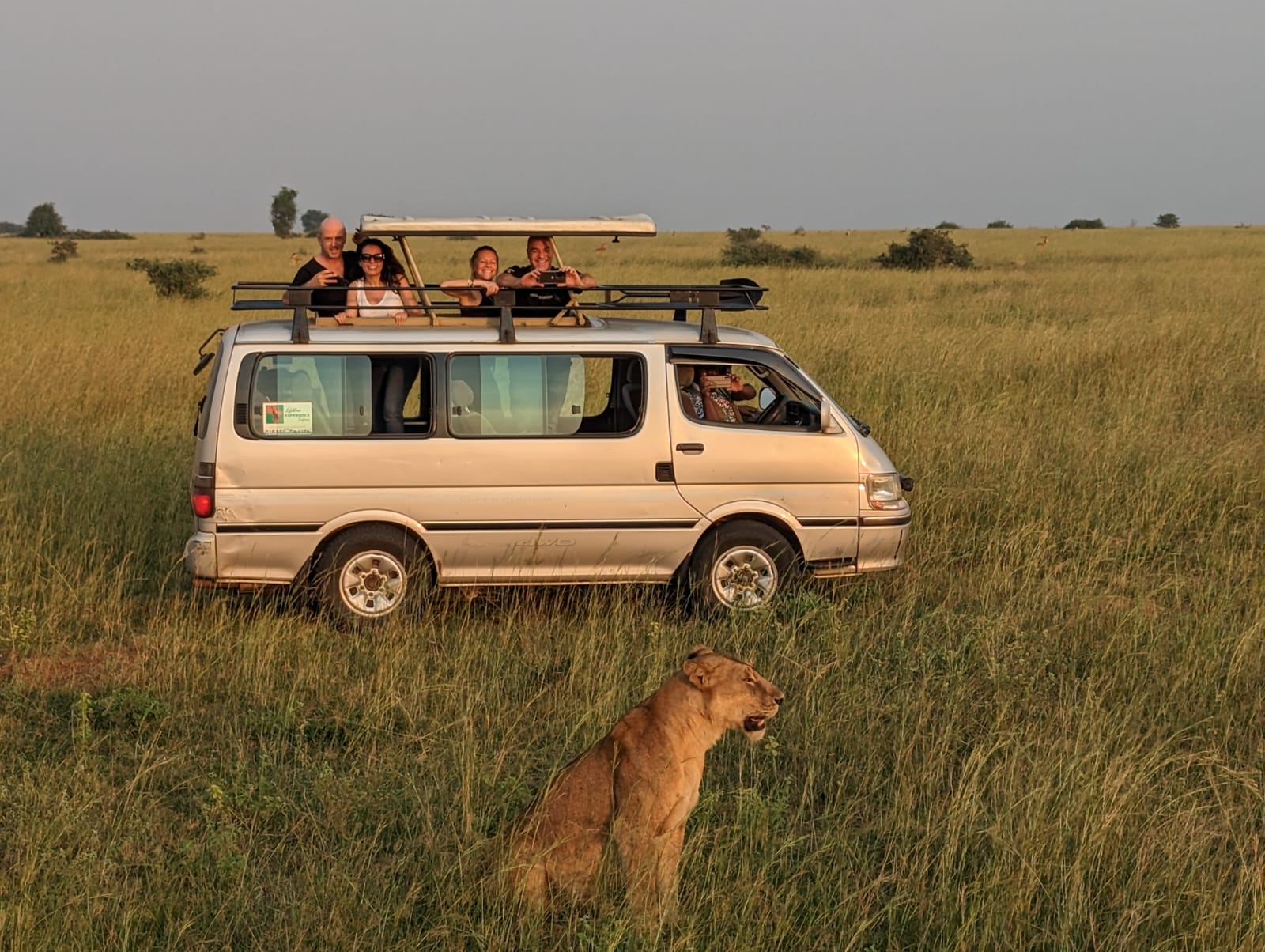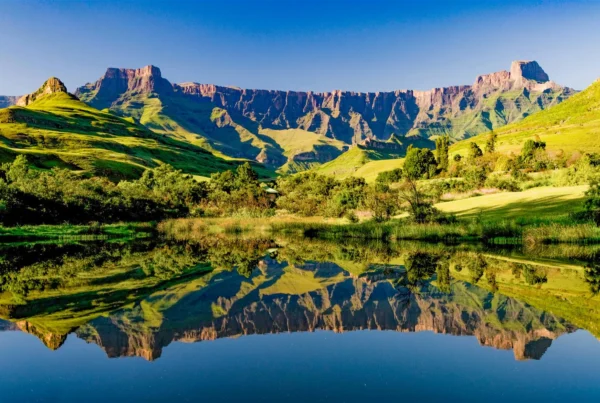What Wildlife Viewing Differences Are There Between Uganda’s Parks? | 2026 Uganda Safari Guide
To speak of Uganda, the Pearl of Africa, is to evoke a land where wilderness breathes with a rhythm unlike anywhere else on the continent. From misty mountain forests echoing with the calls of gorillas to golden savannahs alive with lions and elephants, Uganda’s natural diversity is astonishing. Yet, for those planning a safari, one question often arises — what makes the wildlife viewing experiences different from one park to another?
The truth is that Uganda’s national parks are not simply variations of the same wilderness; they are distinct worlds shaped by geography, climate, altitude, and ecosystem. Each one tells a different story of evolution and adaptation, offering unique encounters that appeal to different kinds of travelers. Some parks promise close-up moments with great apes, others unveil vast plains roamed by big cats, while a few blend water and forest landscapes into rare ecological harmony.
This comprehensive exploration reveals the wildlife viewing differences among Uganda’s national parks, delving deeply into the character, habitats, and species that define each one. For travelers seeking not just sightings but understanding — the kind that enriches both heart and mind — Uganda’s mosaic of ecosystems presents a safari experience like no other in Africa.
Understanding Uganda’s Ecological Diversity
Uganda lies at the meeting point of East Africa’s savannah and Central Africa’s rainforest, creating one of the most biologically diverse environments on Earth. Within its borders are more than 10 national parks and numerous reserves that collectively protect over half of Africa’s bird species and 13 types of primates, including the endangered mountain gorilla and chimpanzee.
The country’s varied altitude — from the snow-capped Rwenzori Mountains to the wetlands of Lake Albert — allows ecosystems to shift dramatically within short distances. This topographical variety gives each park its distinct identity, influencing not only the animals that thrive there but also the ways visitors experience them.
For instance, tracking gorillas through the tangled jungles of Bwindi Impenetrable Forest offers an intimate, emotional encounter far removed from the sweeping drama of lion hunts across the open plains of Queen Elizabeth National Park. Meanwhile, gliding along the Nile in Murchison Falls National Park reveals aquatic life that cannot be seen elsewhere. These differences make Uganda a destination where every park feels like a new chapter in the same extraordinary story.
Bwindi Impenetrable National Park: The Realm of the Mountain Gorilla
Hidden in Uganda’s southwest, Bwindi Impenetrable National Park is a living cathedral of mist, moss, and mystery. Its dense forest — a UNESCO World Heritage Site — shelters roughly half of the world’s remaining mountain gorillas. Nowhere else offers such profound proximity to these gentle giants.
Wildlife viewing in Bwindi differs fundamentally from savannah safaris. Here, the experience is not about scanning horizons but venturing on foot into a labyrinth of vegetation, guided by trackers who read every broken twig and faint call. After hours of trekking through vines and ridges, travelers often find themselves face to face with a gorilla family — an encounter that dissolves the distance between species.
Gorilla trekking is emotional, not just visual. The power of seeing a silverback watch over his young, or a baby tug playfully at a mother’s fur, is unforgettable. The forest is alive with other creatures, too — forest elephants, duikers, and over 350 bird species — yet it is the gorilla that defines Bwindi’s soul.
What makes Bwindi unique is its intimacy. Unlike open savannah parks where wildlife is observed from vehicles, here the connection is personal, physical, and deeply humbling. It is a place where silence speaks, and where the line between observer and participant blurs.
Mgahinga Gorilla National Park: The Mountain Sanctuary
Nearby, Mgahinga Gorilla National Park offers a different, though equally stirring, wildlife experience. Smaller than Bwindi but equally dramatic, it sits within the Virunga Volcanoes range, sharing borders with Rwanda and the Democratic Republic of Congo.
Mgahinga’s wildlife viewing focuses not only on mountain gorillas but also on golden monkeys, a rare and beautiful species found only in this region. Watching these agile primates leap through bamboo forests with flashes of orange fur is a delight of its own.
Beyond primates, Mgahinga’s altitude and volcanic terrain attract unique alpine species. The park is also culturally distinct; it is the ancestral homeland of the Batwa pygmies, whose traditions add human depth to the wilderness.
In Mgahinga, the emphasis is on serenity and exclusivity. Visitor numbers are lower than in Bwindi, meaning treks often feel private. The combination of gorillas, golden monkeys, and stunning volcanic scenery makes Mgahinga a perfect complement for travelers seeking solitude and variety.
Kibale National Park: The Primate Capital of the World
Where Bwindi immerses travelers in dense jungle, Kibale National Park opens a more accessible yet equally enchanting rainforest world. Known as the Primate Capital of the World, Kibale hosts 13 species of primates, including over 1,500 chimpanzees, making it Uganda’s premier destination for chimpanzee tracking.
Wildlife viewing here is characterized by motion and sound. Unlike gorillas, which move slowly and rest often, chimpanzees are energetic and vocal. Their calls echo through the forest canopy like a symphony of excitement. Tracking them means following rangers through tangled trails until the forest bursts into life — the sight of chimps swinging through branches, grooming, or cracking nuts with tools.
Kibale’s diversity extends beyond chimpanzees. L’Hoest’s monkeys, red colobus, and grey-cheeked mangabeys inhabit the same forest, while forest elephants and buffaloes roam quietly in the shadows. The park’s birdlife is extraordinary, with species like the African pitta and green-breasted pitta attracting enthusiasts worldwide.
What sets Kibale apart is its accessibility and educational depth. Visitors can join habituation experiences, spending full days observing primates in their natural environment. This makes Kibale ideal for those who seek not just sightings but understanding — a scientific yet soulful connection with Africa’s closest relatives.
Queen Elizabeth National Park: The Great Ecological Mosaic
If one park captures the essence of Uganda’s ecological diversity, it is Queen Elizabeth National Park. Stretching from the Rwenzori foothills to the Kazinga Channel, it combines savannah, forest, and wetland ecosystems within a single protected area. This mosaic gives rise to one of the most varied wildlife viewing experiences in Africa.
On the Kasenyi Plains, lions stalk herds of kob and buffalo, while elephants traverse acacia woodlands. Around the Ishasha sector, the park’s most famous residents — tree-climbing lions — rest lazily on fig branches, an extraordinary behavior seen in only two places in the world.
Along the Kazinga Channel, a boat cruise transforms safari into spectacle. Hippos crowd the water, crocodiles bask on sandy banks, and elephants descend to drink in the golden light of afternoon. The variety of scenes — from open plains to lakeside wetlands — makes every moment feel like a different ecosystem entirely.
What distinguishes Queen Elizabeth is its balance between wildlife abundance and scenic diversity. It offers both quantity and quality — herds numbering in hundreds and birdlife that surpasses 600 species. The contrast between dry savannah drives and tranquil water safaris creates a rhythm that keeps travelers captivated throughout.
Murchison Falls National Park: The Power of the Nile
In the north, Murchison Falls National Park offers wildlife viewing that marries grandeur with drama. It is Uganda’s largest and oldest park, bisected by the mighty River Nile, which explodes through a narrow gorge at Murchison Falls — the most powerful waterfall on Earth.
The park’s northern section features expansive savannah where elephants, giraffes, lions, and buffalo roam freely. The Nile itself becomes a stage for life — hippos surfacing beside boats, crocodiles gliding silently beneath, and fish eagles crying above.
Boat cruises to the base of the falls or downstream toward the Nile Delta are among the park’s highlights, offering close encounters with both aquatic and terrestrial wildlife. Birdwatchers may spot the elusive shoebill stork, one of Africa’s rarest species.
What makes Murchison unique is its fusion of force and abundance. Nowhere else can travelers witness such a powerful natural phenomenon alongside classic game viewing. The presence of the Nile defines not just the scenery but the behavior of animals, whose survival depends on its eternal flow.
Kidepo Valley National Park: The Wild Frontier
In Uganda’s far northeast lies Kidepo Valley National Park, a landscape of rugged beauty and solitude. Isolated from the main tourist circuit, Kidepo offers one of Africa’s last truly untouched wilderness experiences.
Here, the terrain is vast and open — endless plains framed by distant mountains, where herds of buffalo stretch to the horizon and predators roam freely. Cheetahs, lions, and leopards dominate the grasslands, while elephants, giraffes, and zebras graze in peace.
Unlike other Ugandan parks influenced by Central African forests, Kidepo resembles Kenya’s Turkana and Tanzania’s Serengeti ecosystems, blending dry savannah with acacia scrub. Its remoteness ensures minimal human presence, making wildlife encounters raw and authentic.
The Narus Valley is the park’s beating heart, home to dense concentrations of animals during the dry season. Further north, the Kidepo River Valley offers rare birdlife and cultural encounters with the Karamojong people, whose traditional lifestyle remains largely intact.
What sets Kidepo apart is its sense of timelessness. The wildlife feels wilder, the silence deeper, and the connection more primal. For those who venture this far, Kidepo rewards them not only with sightings but with solitude — the luxury of being alone in Africa’s great wilderness.
Lake Mburo National Park: The Gentle Escape
If Kidepo embodies the raw, untamed wild, Lake Mburo National Park represents the calm and accessible side of Uganda’s wildlife experience. Located just a few hours from Kampala, it is the most convenient park for short safaris and weekend escapes.
Despite its smaller size, Lake Mburo offers a variety of wildlife in picturesque settings. The park is known for zebras, impalas, elands, topis, and hippos, as well as over 300 bird species. Its compact layout allows for more intimate viewing — animals often appear within close range, and the slower pace makes it ideal for walking safaris, horseback rides, and boat excursions.
Lake Mburo stands out for its tranquility. It lacks large predators like lions, which means activities such as cycling or nature walks are possible under ranger supervision. The combination of savannah, woodland, and lake environments creates a softer, more contemplative experience — one focused on scenery, photography, and connection rather than adrenaline.
Rwenzori Mountains National Park: Wildlife in the Clouds
Unlike traditional safari destinations, the Rwenzori Mountains National Park offers wildlife of a different kind — creatures adapted to the alpine world. Known as the “Mountains of the Moon,” the Rwenzoris rise to over 5,000 meters, their slopes cloaked in cloud forests and glaciers.
Wildlife here includes Rwenzori colobus monkeys, giant forest hogs, and unique bird species such as the Rwenzori turaco. The park’s real appeal, however, lies in its fusion of biodiversity and geography. Every ascent reveals a shift in life zones — from tropical rainforest to heather zone to snow-capped peaks.
Rwenzori’s wildlife viewing is immersive but demanding, attracting hikers and biologists more than casual tourists. Yet, for those who venture up, it is a humbling encounter with evolution itself — proof of life’s ability to adapt even in the most extreme altitudes.
Semuliki National Park: The Central African Connection
Tucked along the western border with the Congo, Semuliki National Park represents Uganda’s link to the Congo Basin rainforest. Its dense lowland forest is unlike any other in East Africa, harboring species more typical of Central Africa.
Wildlife viewing here feels otherworldly — forest buffalo, pygmy antelopes, and a dazzling array of butterflies fill the humid air. The park is also home to the Sempaya Hot Springs, natural wonders that bubble and hiss amid tropical vegetation.
Semuliki’s greatest treasure is its birdlife. With over 440 recorded species, including many found nowhere else in East Africa, it is a paradise for ornithologists. Travelers visiting Semuliki experience Uganda’s wilder, more mysterious side — where nature feels ancient and untamed.
Merging Experiences: Why No Two Parks Feel the Same
The beauty of Uganda’s wildlife experience lies in its contrast. While neighboring countries like Kenya and Tanzania focus primarily on open-plain safaris, Uganda offers an intricate blend of ecosystems. Each park presents a new lens through which to view life — from ground-level encounters with gorillas to sweeping vistas filled with elephants.
The difference in altitude alone defines much of the variation. At high elevations, forests dominate and primates thrive; at lower altitudes, grasslands and rivers sustain large mammals. Climate zones shift quickly, giving travelers the sensation of crossing entire worlds within a single journey.
This diversity ensures that Uganda cannot be experienced in one park alone. Each reserve adds another layer to the country’s ecological story, revealing new patterns of behavior, adaptation, and coexistence.
Conservation and Community: The Human Dimension of Wildlife Viewing
Wildlife in Uganda thrives not by chance but by design. The Uganda Wildlife Authority (UWA), along with local communities, has created a model of conservation that integrates people with nature. Revenue from park permits supports nearby villages, funding schools and healthcare.
In Bwindi and Mgahinga, portions of gorilla permit fees are reinvested in community projects, ensuring that conservation benefits those who live closest to wildlife. This coexistence model makes Uganda’s parks not only sanctuaries for animals but also symbols of hope for sustainable tourism.
Visitors, by choosing responsible tour operators and respecting park guidelines, become part of this cycle of preservation. Each wildlife encounter, therefore, carries a deeper meaning — one that extends beyond sight to impact.
Conclusion: A Symphony of Ecosystems
The wildlife viewing differences among Uganda’s parks form a mosaic of experiences unparalleled on the continent. From the emotional intimacy of gorilla trekking in Bwindi to the grand spectacle of Murchison Falls, from the primates of Kibale to the predators of Kidepo, each park offers a different chapter in Uganda’s story of life.
For travelers seeking diversity, Uganda delivers an entire continent in one country. Every landscape holds a unique pulse, every species a lesson in survival. The difference between parks is not a matter of quantity but of character — the soul of each place expressed through its animals, sounds, and light.
To experience this diversity seamlessly and meaningfully, it is best to book their Africa tours and safaris with WildHorn Africa. With expert guides, tailored itineraries, and a commitment to sustainable travel, WildHorn Africa ensures that every visitor not only witnesses Uganda’s wild beauty but also understands it — deeply and personally.
Because in Uganda, wildlife is not just seen; it is felt, lived, and remembered forever.





 WildHorn Africa – Authentic and unforgettable tours across Africa, guided by local experts who know the land, wildlife, and culture best.
WildHorn Africa – Authentic and unforgettable tours across Africa, guided by local experts who know the land, wildlife, and culture best.


